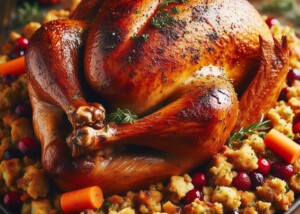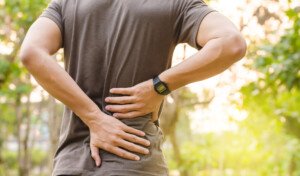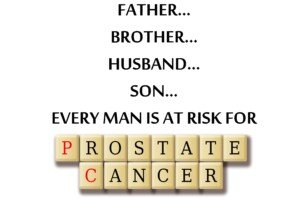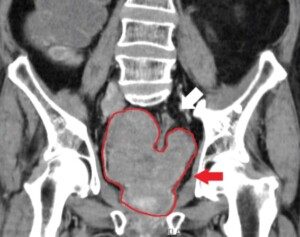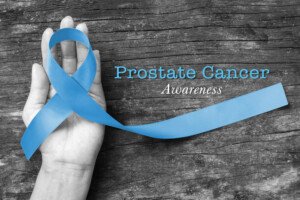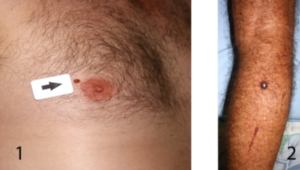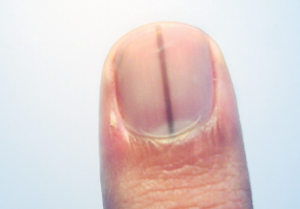You can feel free to overindulge on Thanksgiving with these 5 strategies for banking calories ahead of time and on that very day!
Build a calorie fund ahead of all that food; here’s how.
While it’s totally fine to indulge a little (or a lot), it helps to go in with a game plan so you don’t end up feeling sluggish, regretful or seeing “scale shock” the morning after.
That’s where the concept of calorie banking comes in. Think of it as giving your body a little wiggle room so you can enjoy the feast without feeling like those surplus calories will turn into several pounds of fat next day.
Just like how you’d take measures to save money ahead of a vacation by giving up on some elective expenditures, so that you can have extra money for your trip, you can apply this same concept to building up a reserve of calories that you can withdraw from – preventing that feeling of “I ate way too much!”
Move Extra that Week

Shutterstock/El Nariz
Think of physical activity as a smart way to put extra calories in the bank.
However, we need to be judicious with the thought process here.
On average, a medium pace mile walk will burn 100 calories for a woman.
If you’re already walking a nonstop mile daily for exercise, then you’d have to add a second mile to add something to your calorie fund. This would be an example of moving more for that week.
Multiply that by seven for 700 calories to add to the bank. That’s almost two average pieces of pumpkin pie!
I recommend that you don’t get caught up with the math, though, or you’ll drive yourself batty.
Just put in a lot of extra movement time and it will contribute to the fund.
You may also want to consider HIIT: high intensity interval training, which will burn more calories in much less time, and keep your metabolism elevated even after you finish the session.
The HIIT afterburn is where the big jackpot is!
If you normally do HIIT twice a week, then do it four times total in the week before the feast.
If you normally lift weights, though, it’s best you just stick to your regular program.
In other words, if you normally do five sets of heavy deadlifts and five sets of heavy squats, then keep it this way.
Instead, crush the calories with more HIIT, and perhaps find time to go on a long scenic hike in that week, preferably at as brisk a pace as possible.
Is there a grass hill near your home? Do HIIT on it: dash up, walk down slowly. Dash up, walk down slowly.
If HIIT isn’t your bag, perhaps you can take a few extra fitness classes that get you huffing and puffing.
Eat Less that Week

Freepik
Simply eat less. Don’t starve yourself. Fill up on nutrient dense, lower calorie foods.
Give up fast food and other high calorie items or types of foods that you’re prone to overeating.
Perhaps you can give up dessert for that week.
You can turn down donuts at work that week (really now, you can get donuts anywhere any day for the rest of your life).
You can also give up soda and juice, and replace with water.
Replace juice with whole fruit – far more filling, and the fiber content will slow down the absorption of fruit’s natural sugar.
Every adjustment will stack up in building a calorie reserve.
What to Eat, or not Eat, Before the Big Thanksgiving Day Dinner
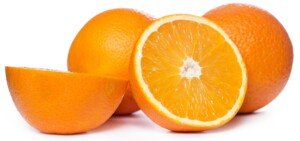
Freepik/Racool_studio
There’s no hardcore research that dictates just how this should be done. There’s no one size fits all template.
It really comes down to a personal preference – whatever works best for you.
However, one thing is for sure: There should be a plan that’s well in place.
For some people, this might be a small breakfast of protein such as eggs or yogurt, as there will be plenty of carbs at the dinner.
For others it could mean what they typically eat for breakfast.
And still for others, it could be a fruit plate – something healthful to hold them over until the big feast.
But if you want enough room for foods you normally don’t get to have, or for a relative’s legendary recipe that you eat only a few times a year, then having a much smaller-than-usual breakfast will give you this room.
On the other hand, the turkey feast you attend might be earlier in the day.
All while I was growing up, my mother had everyone at the table by around 2 pm.
I saw no point in eating breakfast when I was going to fill up at 2:00.
In fact, I wanted to be very hungry and have plenty of room, to load up on foods I normally didn’t have readily available, such as my mother’s killer rice and lamb dish and thick slices of succulent ham.
In later years I had learned to relish stuffing and my mother’s original cheesecake.
You’d damn better believe I saw no purpose for breakfast!
I also saw breakfast as needless calories, being that I’d be loading up not too long after.
Not everyone should skip breakfast, though. This includes those who need food in the morning as part of managing a medical condition, or pregnant women.
Some people also just feel crummy if they haven’t eaten within an hour of waking up.
But many others, such as myself, find that gorging at the Thanksgiving table is much more enjoyable when our tummies feel like bottomless pits.
Choosing Food at the Feast

Why fill up on a salad (which you can always easily have) when instead you can fill up on Aunt Rose’s killer homemade scalloped potatoes?
Let’s face it: Is Thanksgiving day the best day to worry about getting enough greens or fruit?
Now some people can’t enjoy a big meal to its fullest without a green salad – not for health conscious reasons, but because the taste of a crisp, well-seasoned salad adds zest to a big-course meal.
But at the same time, you shouldn’t feel you must have the spinach salad because “it’s good for you.”
It’s Thanksgiving! It’s okay to eat only the rich “sinful” foods!
But at the same time, do this judiciously. For example, have water instead of sugary soda; soda will waste calories. And you’ve already had soda in your life what, a million times? Ditch it for this day and use those calories up on your grandma’s famous homemade mashed potatoes.
The bigger concern is that of making sure you don’t overeat to the point of feeling sick or igniting heartburn.
You’ll also want to save room for the evening spread. If the dinner is earlier in the day, there will certainly be some kind of secondary feast later on.
You’re not going to develop type 2 diabetes or coronary artery disease if you skip the beet, spinach or iceberg lettuce salad.
An easy rule to follow is to fill up on that which you can’t readily have.
This might mean dark meat turkey. This is really hard to come by in normal day-to-day life.
It could mean a rarely-seen relative’s homemade apple cobbler.
When I was growing up, one of my aunts always brought over dinner rolls that were only available in her town, which was far away.
Needless to say, I prioritized tummy room for those rolls rather than eat something my mother had always served at least once a week: corn and green beans.
If you want seconds on the pie or chocolate cake, go for it, as long as you’re not full.
Eat for physical pleasure, not out of stress, anxiety, boredom with boring relatives or “because it’s there.”
Do you really need the liquor?
A glass of wine is like putting a cookie in your belly.
If you enjoy your wine and champagne, then that’s okay. But don’t go overboard. First off, alcohol can sneak in a lot of calories. Second, it’s never okay to get buzzed.
Plus, you should NEVER, EVER drink alcohol because others are doing so or because someone insists that you do.
You can always tell them, “It’s extra calories that I don’t need.”
They might come back with, “One day of extra calories won’t make your dress size go up.”
You can then say, “Well gee, I just don’t care to drink. End of story.” Then smile firmly with good eye contact!
![]()


